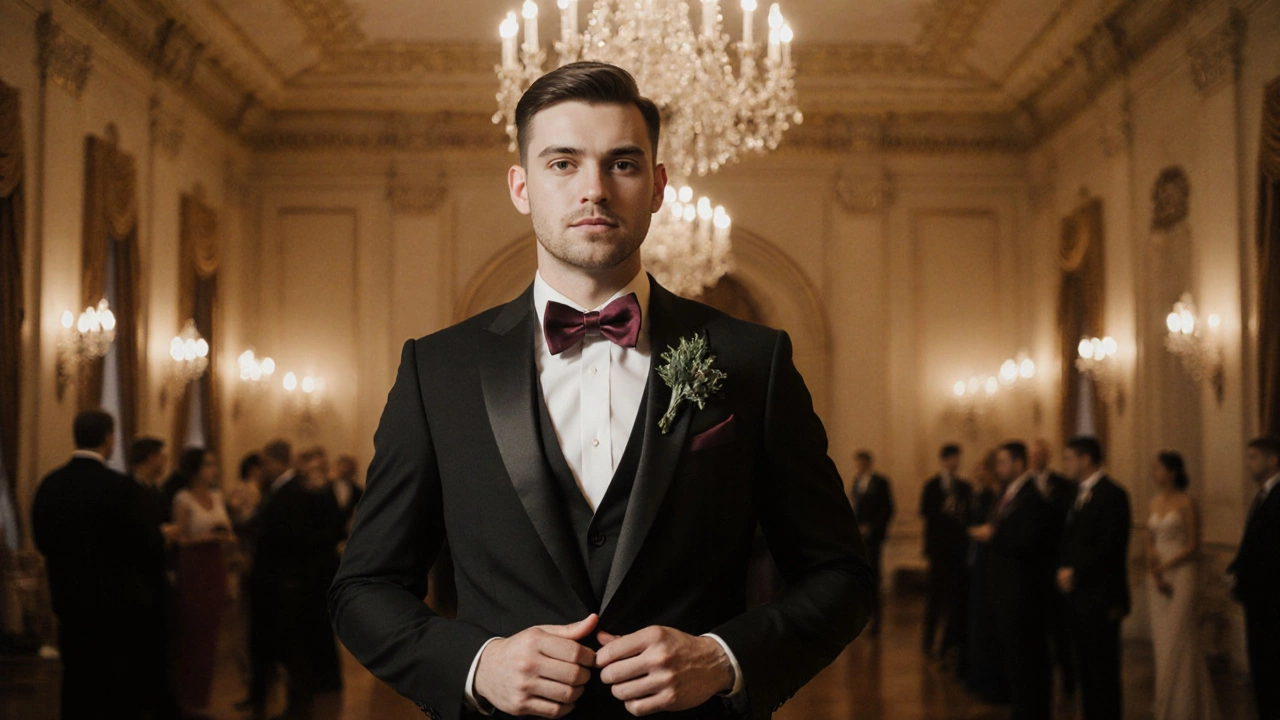Formalwear Etiquette: Your Guide to Groom’s Style Rules
When planning a wedding, formalwear etiquette, the set of unwritten rules that dictate how a groom should dress for the big day. Also known as wedding dress code, it helps couples avoid awkward moments and keeps the celebration looking polished.
One of the first pieces of the puzzle is the groom's suit timeline, a step‑by‑step schedule that starts with fabric selection and ends with the final fitting. Most experts suggest locking in the suit at least four months before the ceremony, giving enough leeway for alterations and any custom details. During this period the groom can experiment with lapel styles, button counts, and fabric weight, while the bride and planner coordinate colors that match the overall theme. Skipping this timeline often leads to rushed fittings, which can cause wrinkles, poor posture, or a suit that simply doesn’t fit the venue’s vibe. By treating the timeline as a non‑negotiable milestone, you keep stress low and style high.
Another hot topic in formalwear etiquette is the tie or bowtie choice, the decision that determines whether a groom leans classic or adds a modern twist. Traditionally, a silk tie signals formality, while a bowtie adds a dash of personality. The decision hinges on the wedding’s dress code, the time of day, and the groom’s comfort level. For daytime ceremonies, a slim tie in a muted hue blends seamlessly with pastel palettes. Evening events, especially black‑tie affairs, often welcome a black bowtie for that sleek, sophisticated finish. Couples who coordinate the bride’s jewelry with the groom’s neckwear achieve a subtle harmony that photographers love.
Suit Color, Matching, and the Bigger Picture
The final piece of the etiquette puzzle involves suit color selection, choosing a shade that complements the wedding palette, season, and venue lighting. Classic navy, charcoal, and midnight black remain safe bets for most weddings, but fresh trends now include deep emerald, dusty plum, and even soft greige for spring garden affairs. The chosen color influences everything from boutonniere flowers to the groomsmen’s attire. If the groom opts for a bold hue, the groomsmen can either match exactly for a uniform look or pick lighter tones for contrast. The key is consistency – the groom’s suit should set the tone, while the rest of the party follows suit without stealing the spotlight.
By understanding how formalwear etiquette ties together suit timelines, neckwear decisions, and color coordination, you’ll walk down the aisle looking confident and coordinated. Below you’ll find a curated list of articles that dive deeper into each of these areas, giving you step‑by‑step checklists, budget tips, and real‑world examples to make your wedding wardrobe decisions a breeze.
Can a Groom Wear a Black Suit? Pros, Cons & Styling Tips
Explore whether a groom should wear a black suit, covering dress codes, pros and cons, fabric tips, accessories, alternatives, and a decision checklist for a stylish wedding look.
View More